Bamboo care and control
 At Wisley this week we’ve been doing the annual bamboo care and control, under the guidance of Wisley Horticulturist John Rickets. Bamboos are in the grass family, alongside wheat and rice, and all ryegrass, fescue and bentgrass that make up the grassy part of lawns and meadows. From knee-high groundcover, or thin wispy canes with tiny leaves, to thick chunky canes with jungle foliage, bamboos are a very diverse group. Their calming evergreen foliage, and architectural stems offer year-round qualities unobtainable with any other plant group, making them popular choice for contemporary urban schemes.
At Wisley this week we’ve been doing the annual bamboo care and control, under the guidance of Wisley Horticulturist John Rickets. Bamboos are in the grass family, alongside wheat and rice, and all ryegrass, fescue and bentgrass that make up the grassy part of lawns and meadows. From knee-high groundcover, or thin wispy canes with tiny leaves, to thick chunky canes with jungle foliage, bamboos are a very diverse group. Their calming evergreen foliage, and architectural stems offer year-round qualities unobtainable with any other plant group, making them popular choice for contemporary urban schemes.
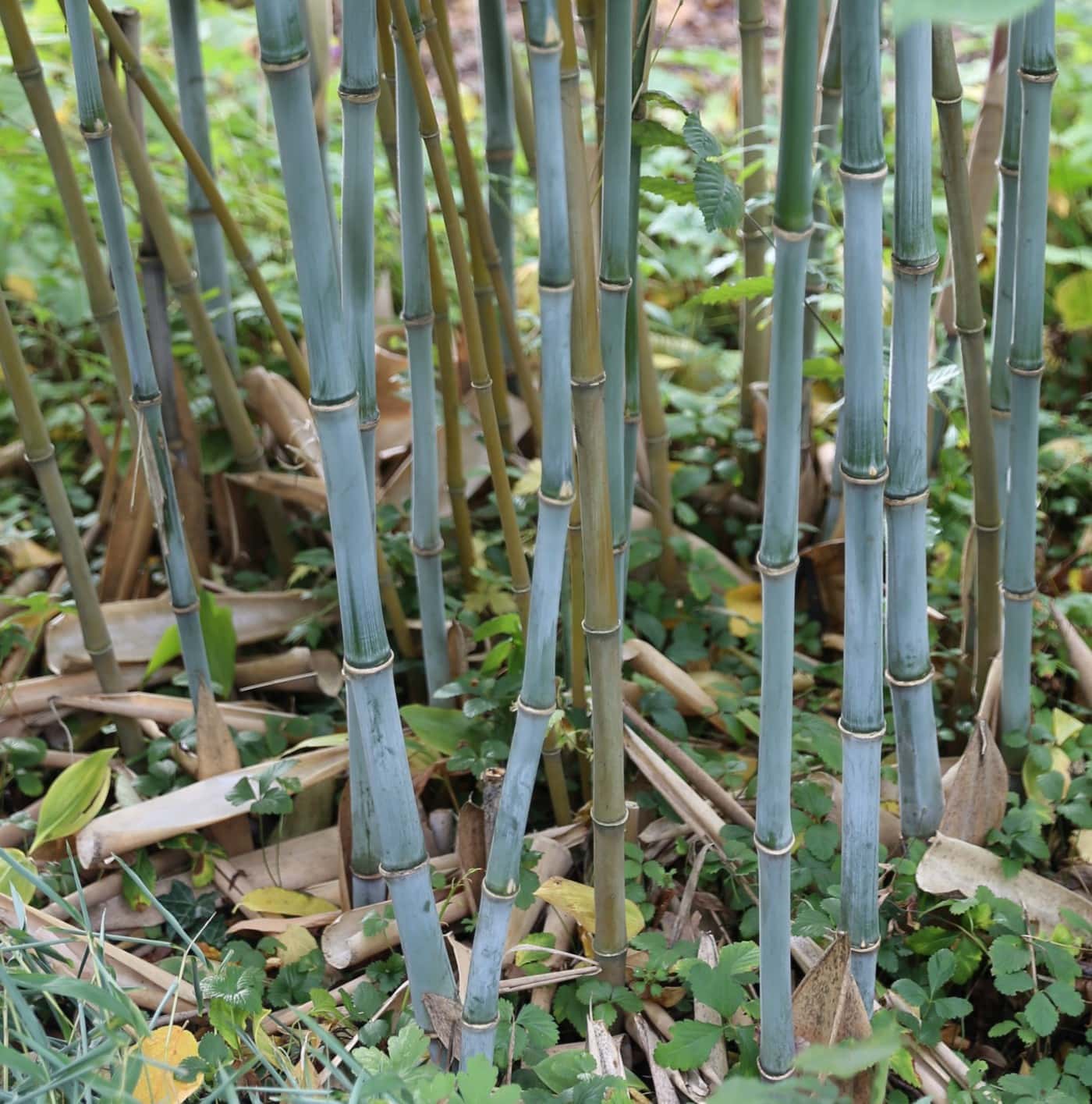
From the gardener’s perspective, there are two types of bamboo to be aware of. There are the clump formers, known botanically as pachymorphs, and then there’s the runners, known as leptomorphs. Clump formers do slowly increase in size, but new shoots always emerge from within or at the very edge of the existing clump. Runners are the ones to keep an eye on. Some will be well-behaved initially, leading you into a false sense of security. But sooner or later, new shoots will start emerging with gusto meters away from where you planted it. Some do run faster and further than others.
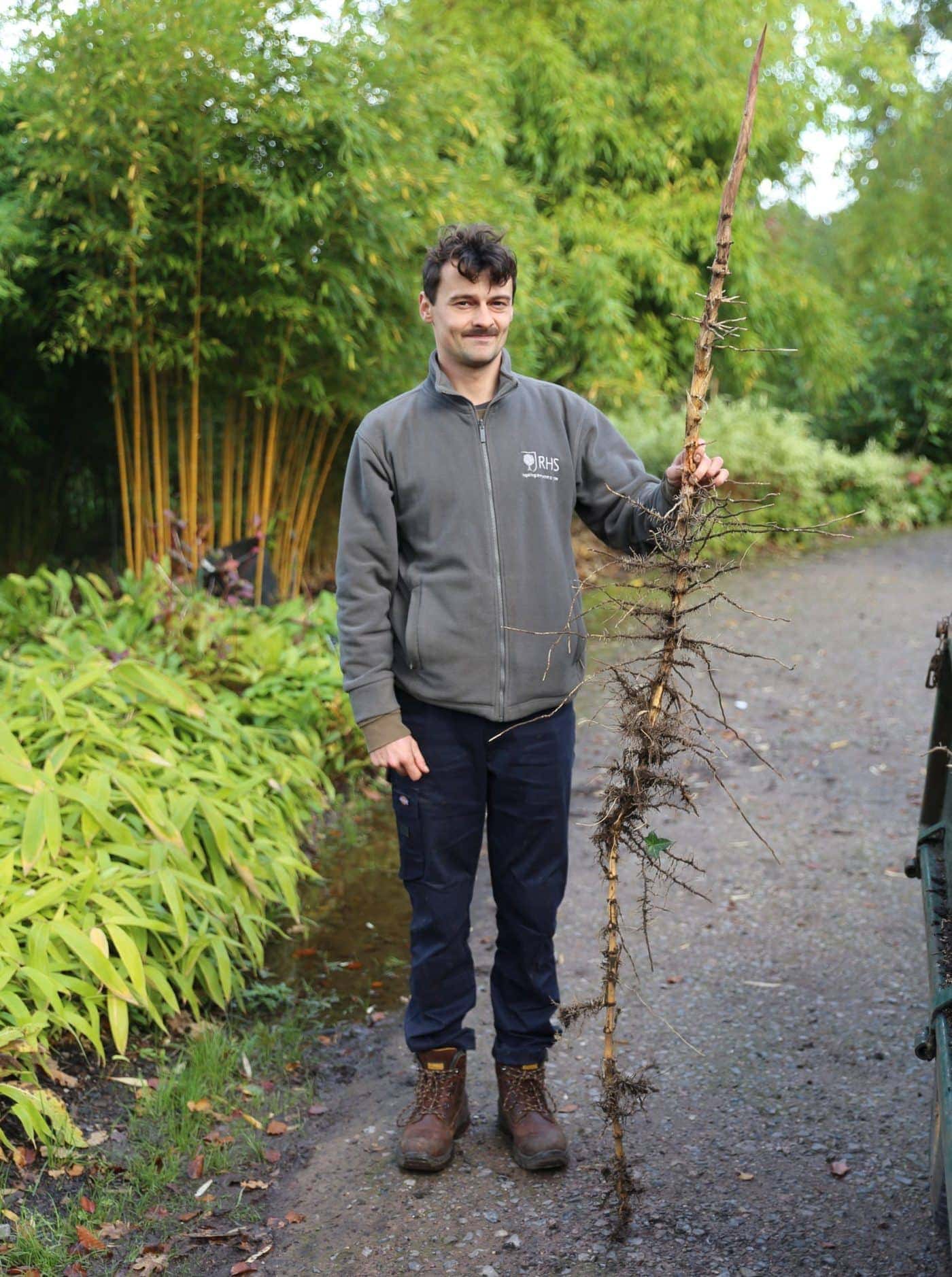
When buying bamboo, knowing the genera (genus) is key to knowing if it is a clump former or a runner. If the plant is in these genera, they are runners;
- x Phyllosasa
- Idocalamus
- Phyllostachys
- Pleioblastus
- Pseudosasa
- Sasa
- Shibataea
- Sasaella
- Semiarundinaria
The following genera are all clump forming;
- Bergbambos
- Borinda
- Chusquea
- Fargesia
- Himalayacalamus
- Thamnocalamus
- Yushania
With the right bamboo care and control, running types can be kept as well mannered garden plants. Controlling the spread of a running bamboo is fairly easy, but you need to be proactive about it annually. In autumn time the new rhizomes will be shooting out around the clump. This is the perfect time of year to rake around the edge of the bamboo to uncover new rhizome tips that are reaching out beyond where you want them. The rhizomes are normally at or just below the soil surface.
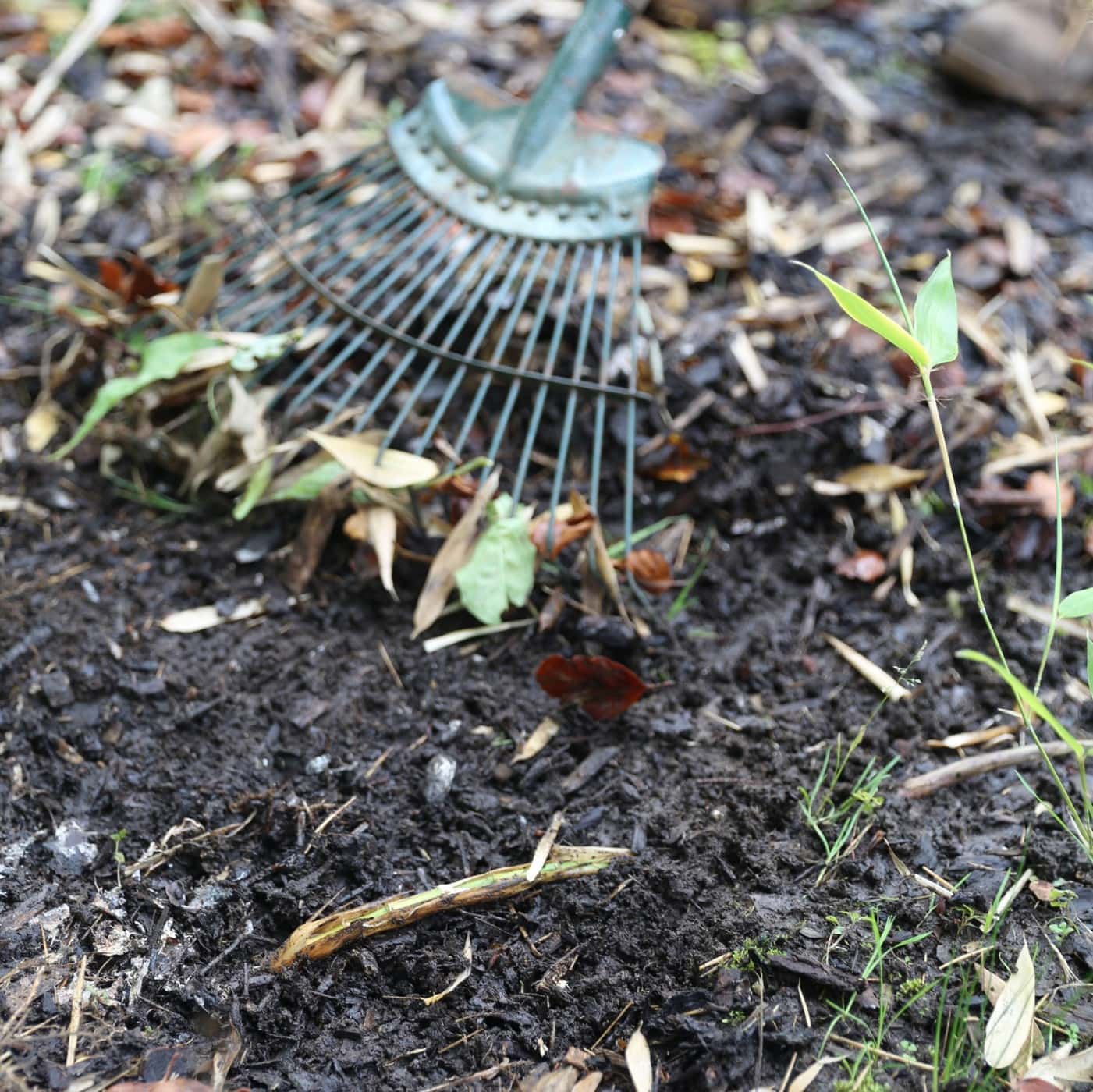
Cut them with a spade or loppers, then follow them along to the tip with a fork or spade, lifting them out. At this time of year, they’re not too heavily rooted so should come up without a fight. If raking doesn’t reveal any rhizomes, push a spade in around the perimeter to cut any rhizomes.

When removing rhizome, you may be tempted to pot it up as a new plant. But it more than likely won’t survive. The new rhizomes and shoots are being fed with energy from older growth, so you’ll need to take a good chunk off that contains a few older culms connected to the new shoots.
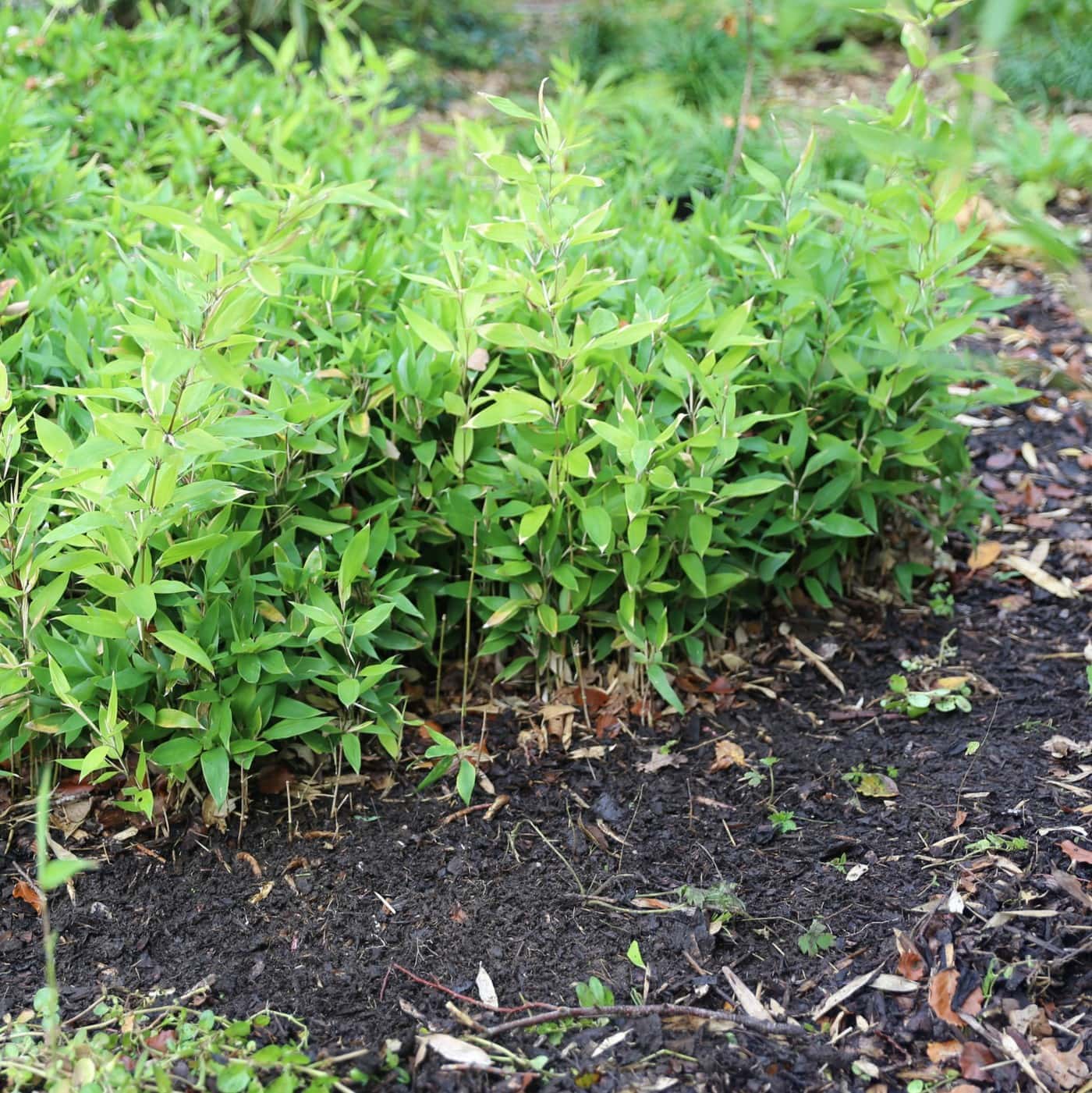
Using a heavy duty plastic or steel root barrier ring is another option. They’re generally about 60cm deep, with an extra 10cm above ground. But they’re a big job to install, can be pretty ugly, often fail, and need regular inspection anyway. Rhizomes can sometimes reach under them, or hop over them if leaf litter accumulates on top. Raking and digging out rhizomes is simpler and easier.
Clumps often look best when decongested of old growth and excessive canes, known as culms botanically. Snap or prune off the side branches and foliage of the lower third to half of all canes to reveal the beautiful colour and create a see-through effect.
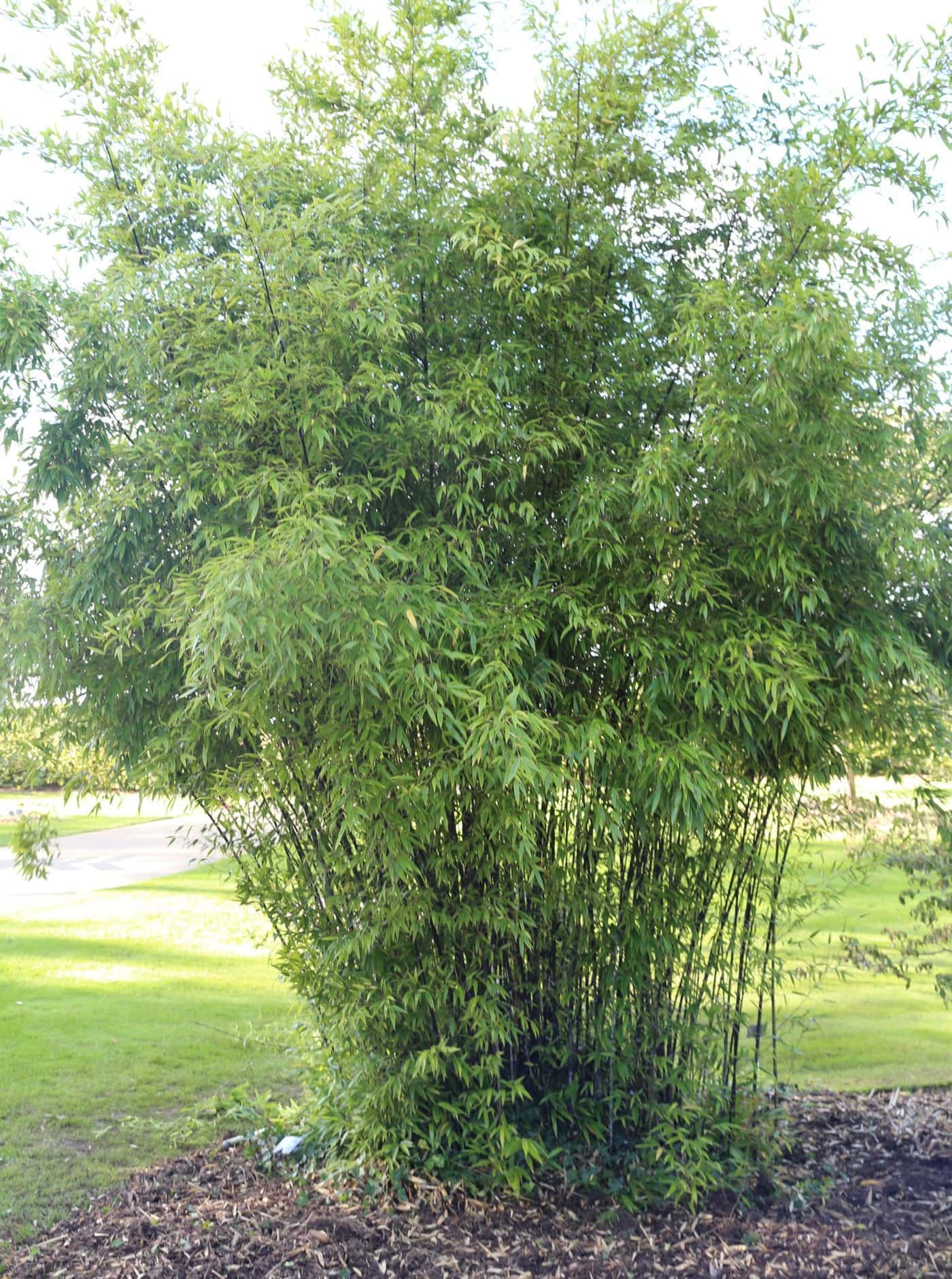
Unlike on woody shrubs, where small young growth will grow on to produce large branches over time, bamboo canes emerge from the base at the final thickness, elongating over a few months to their final height. Culms tend to live around 5 to 7 years before fading away. As a clump of bamboo ages, it generally produces thicker culms. Thin whippy growth at the base can be pruned away to provide a cleaner display of the stems, without damaging emerging thicker shoots that will form good sturdy culms.
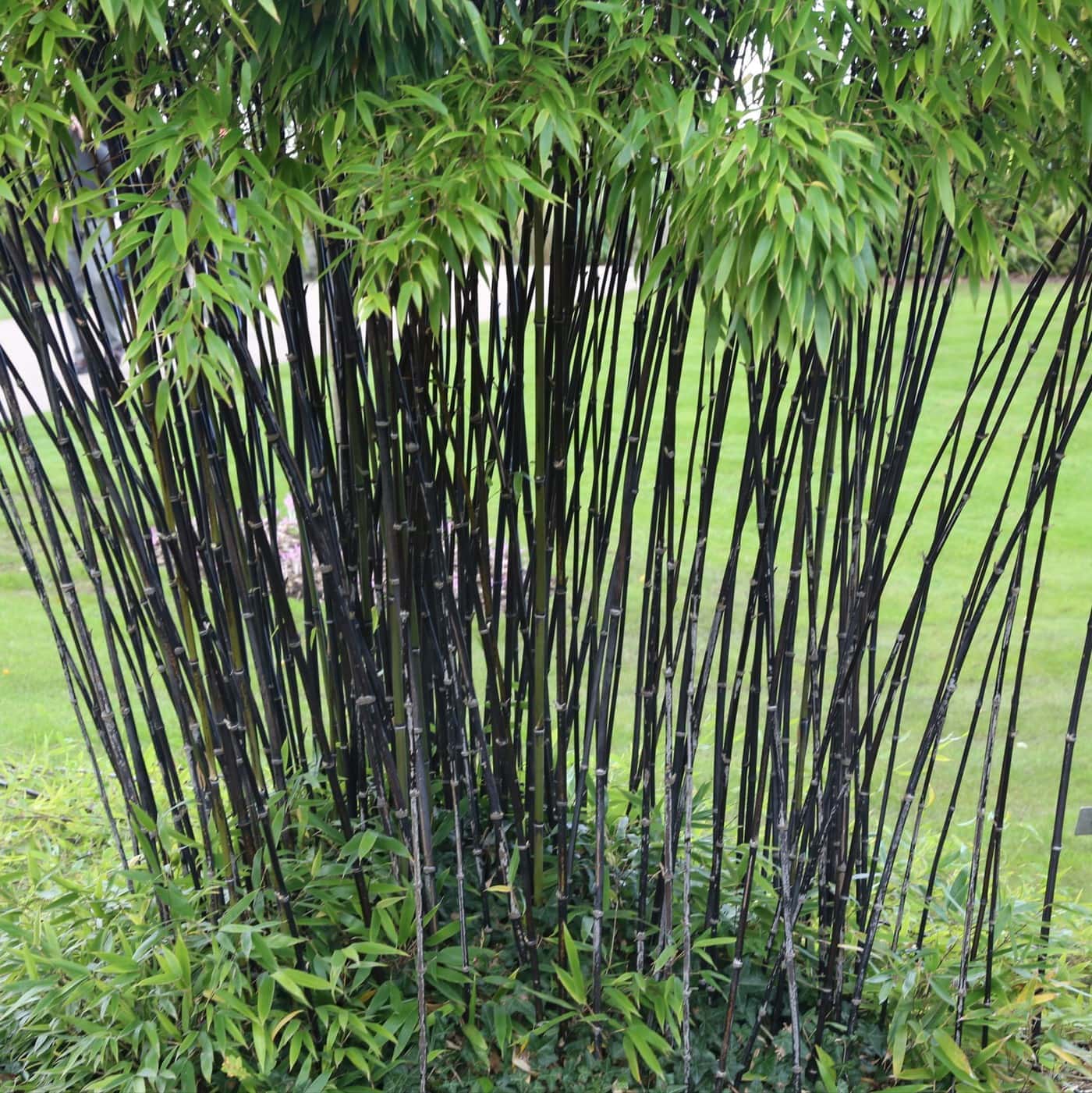
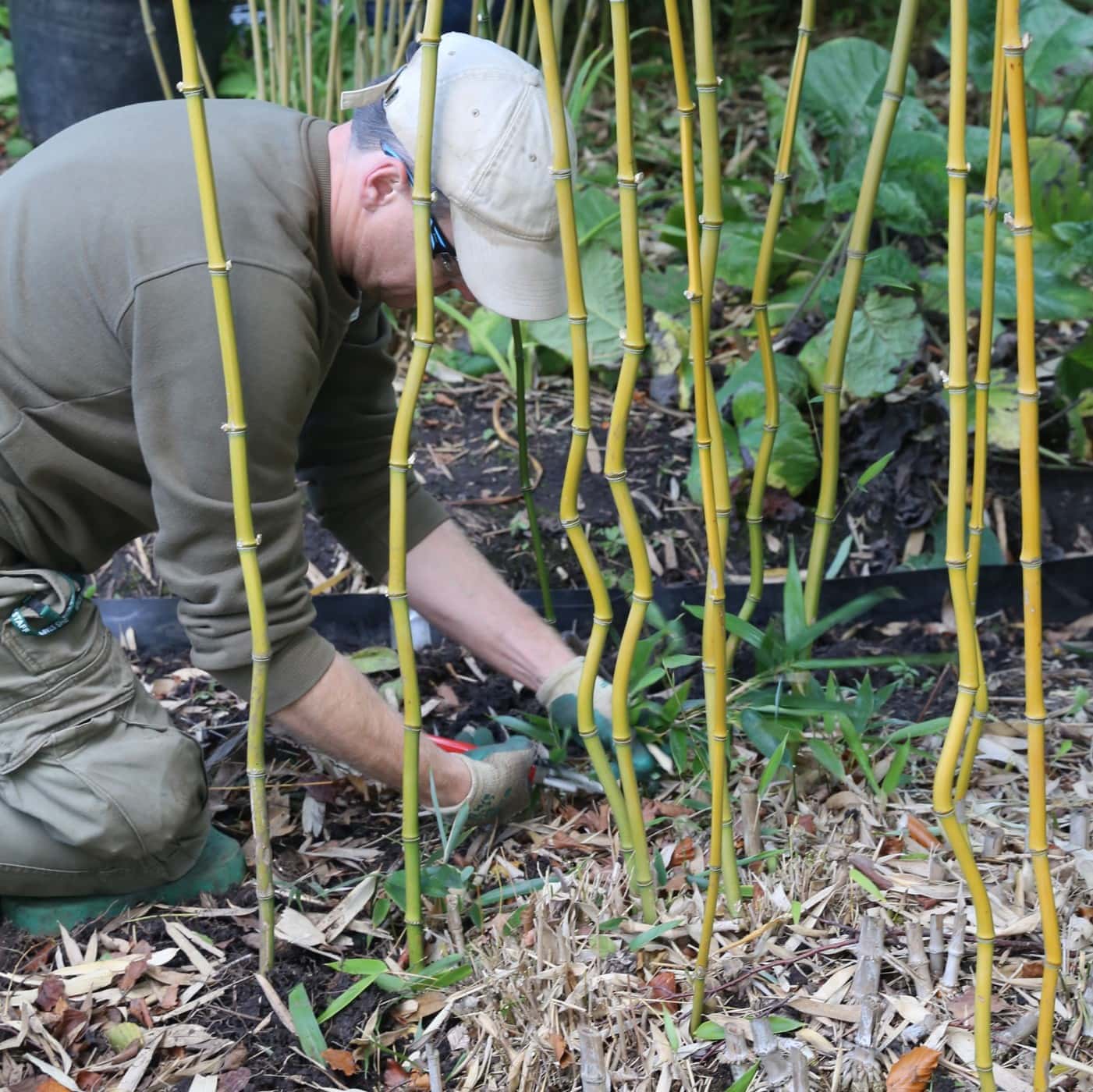
One peculiar characteristic of bamboos is their simultaneous mass flowering. Plants of the same species and from the same ‘cohort’ will all flower together, set seed and subsequently die within a few years of each other, no matter where on earth they are growing. They set seed at set intervals, with some species only seeding every 65 or 120 years. In 2020 I collected seeds from the Chilean bamboo Chusquea gigantea, which flowered around the UK between 2018 and 2019. I’ve not had much luck with them, but it was quite a sight to see a huge mature bamboo totally dead, all leaves fallen, but laden with seed ready to start the next generation. So even if a bamboo does become invasive in your garden, at least you know it will eventually kill itself at some point in the next 120 years!
Owen Hayman
Owen joined the Bestall & Co planting and aftercare team in spring 2019. He is an RHS qualified horticulturist, holding a full Level 3 Diploma in Horticulture, and recently came in the top 3 at the Northern Regional Final of The Young Horticulturist of the Year 2019. After first doing a foundation diploma in Fine Art, he went on to gain a degree and masters in Plant and Soil Science from the University of Sheffield in 2014. Owen worked as a researcher on various field research projects in Alaska, Panama and Borneo. When not away in the field, he became obsessed with visiting gardens and nurseries across the British Isles and the Netherlands, developing his own garden, and then taking on a walled allotment garden as a personal project. He realised his true passion was in horticulture, and so moved away from academia and into the world of specialist plant nurseries and professional gardening.
Owen is now studying the Wisley Diploma, but continues to write articles for us on a monthly basis, and we're delighted to maintain contact with such a passionate and knowledgable plantsman.




